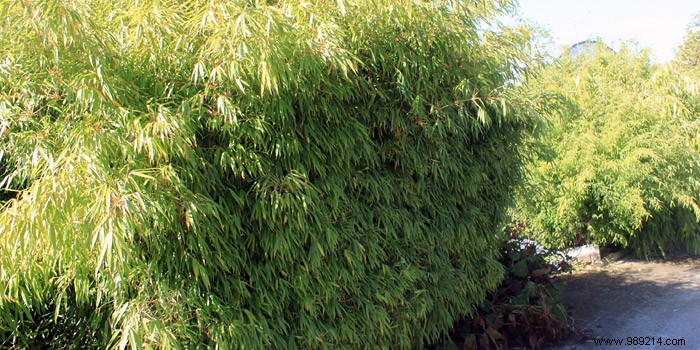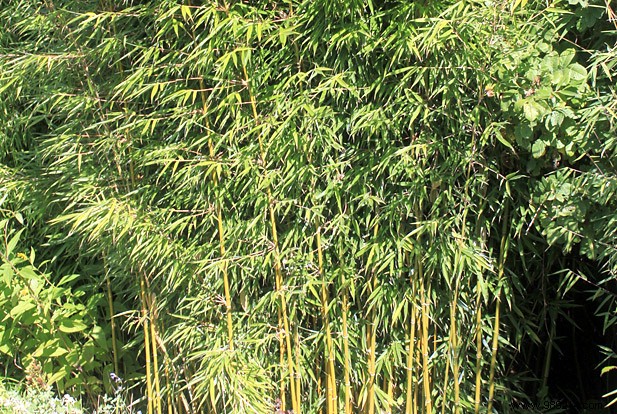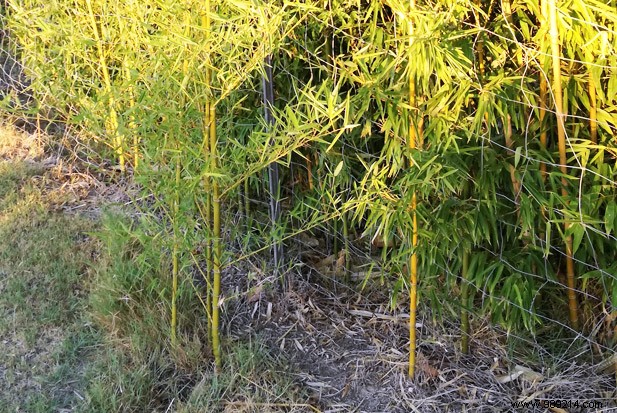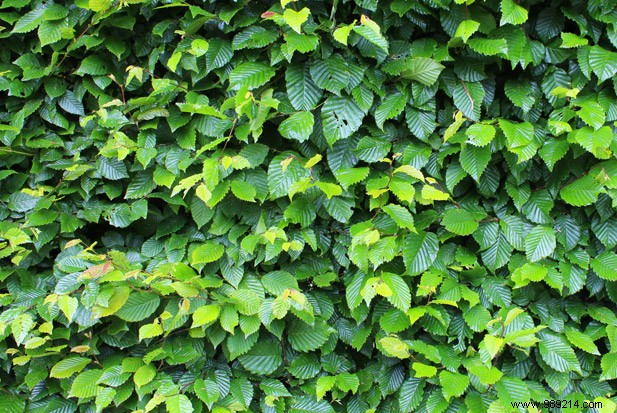
You want to plant a privacy hedge to protect yourself from the gaze of others or to hide a vis-à-vis or an unattractive environment.
Do you want to hide the view of an unattractive environment from your garden by creating a natural privacy screen? What type of hedge to choose? What types of plants could both serve as a screen and at the same time constitute a durable, pretty and ornamental hedge?
Here are some useful tips for choosing a functional hedge for your garden, an aesthetic green screen to hide an unpleasant overlook. There are also hedge kits in some nurseries.
First of all, and it is undeniable, a hedge made up of bamboo is an excellent plant screen. Beyond hiding you from the visual, it will also cut you off from the noise, which is not negligible, especially in town.

A beautiful bamboo hedge here of fargesia bamboos planted behind a low wall
A bamboo hedge is quite simple to plant and its maintenance is easy. Let's go through the main particularities of a bamboo hedge as well as its advantages, point by point.
A bamboo hedge has one major advantage. Unlike a woody hedge where the loss of a shrub will pose a real problem (it takes a long time to replace it), a bamboo will grow faster and its replacement will be all the easier in the case of bamboo tracers.
Also, as you will have understood, the rapid growth of bamboo makes it possible to set up a hedge fairly quickly, which is an asset of choice for people impatient to see the result materialize in their garden.

The bamboos are very dense, ideal for a hedge
As an evergreen hedge it is better than a wall. It cuts the wind without creating turbulence. Indeed a wall stops the wind and strong turbulence is activated at a distance of 5 or 6 times the height of the wall. The hedge works to filter the air. She slows it down and some of the weakened wind blows through. Be careful not to deprive yourself of the sun with a hedge that is too high.
Even if bamboo could grow back and generate some fears because it is invasive without protection, the arrival of non-tracing bamboo has revolutionized the creation of evergreen hedges. It can be used as a single species or mixed with shrubs. It is rather advisable to mix 2 or more species of bamboo, see as mentioned above, integrate shrubs.
Pruning is not repetitive and as frequent as for other types of plants. In practice, the maintenance is quite simple. It consists of carrying out an annual pruning to which a refresher will be added to readjust and cut the troublesome shoots. A bamboo hedge has the advantage of growing quickly and you just have to adjust and maintain the height of it according to what you want.
The rules imposed by the legislation are quite simple:

Use non-tracing bamboos to avoid this
The use of evergreen shrubs is often a very interesting idea to hide prying eyes, strong winds or simply hide the road that passes right in front of your house. The choice is great and many evergreen shrubs can meet this type of requirement.
By definition, the evergreen hedge is interesting because it keeps its leaves all year round and will therefore provide protection whatever the season.
Different choices are available to you. You can create a linear hedge using a single species:Portuguese laurel, viburnum, ligustrum or create a multi-species hedge using a wide choice of foliage shapes but also colors with abelia, eleagnus, photinia, viburnum tinus or golden Mexican orange.

Hornbeam is very often used to compose beautiful evergreen hedges
The advantage of a multi-species hedge is that it allows you to create a diverse habitat for wildlife, which should be taken into account if you want to promote the development of biodiversity in your garden.
Indeed, such and such a bird will not nest in the same species of plants. Also, the diversity of flowering period and type of flowers will allow bees to feed, attract butterflies or other auxiliaries, interesting insects to fight aphids or other undesirables.
But you can also mix so-called evergreen shrubs with deciduous or semi-deciduous shrubs such as hornbeams or beeches. Indeed, their foliage certainly dies but remains attached to the stems and hides the eye all winter. You will find interesting tips on this Rustiqua article.
Coniferous hedges, although interesting, are used less and less due to high maintenance, regular pruning and above all the regular presence of disease.